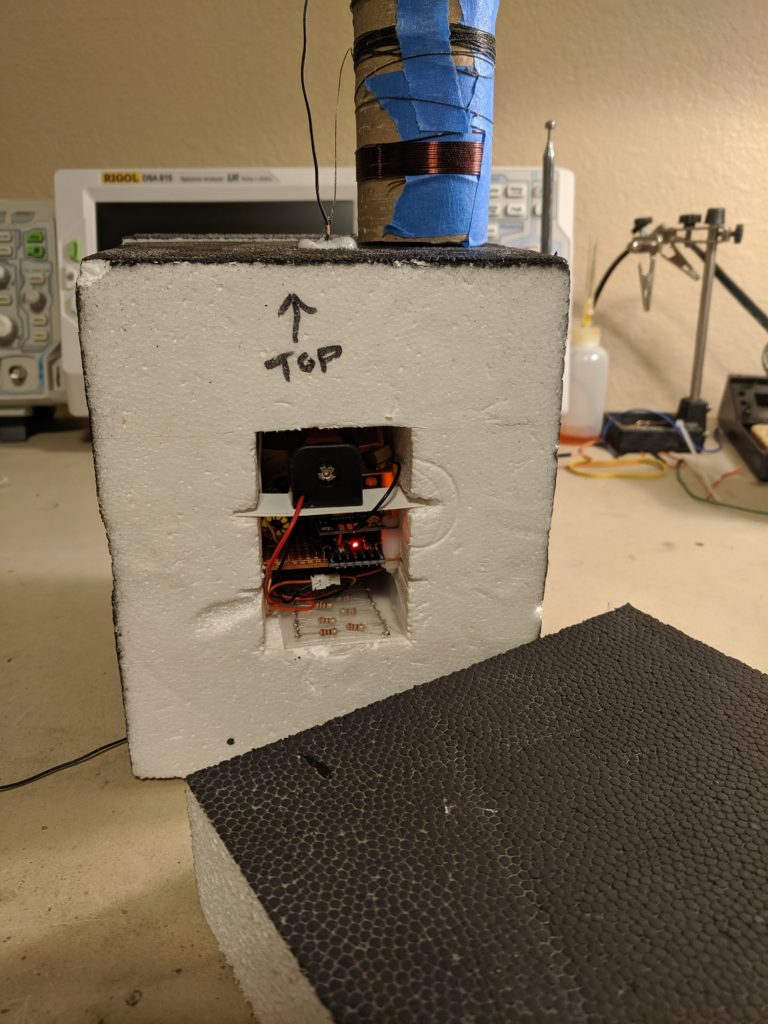FS4 flight planned for June 17th 2019

Another brave squirrel is preparing for flight and a perilous journey to the sky next Monday. Development on the FS4 payload is complete and only a few last-minute assembly tasks remain to be completed prior to launch.
Barring adverse weather conditions (Wind), Flying Squirrel #4 will launch on Jun 17th 2019 from the area around Lucerne Dry Lake bed area just South of the Barstow outlet center, between 9am and 10am local time.
Our squirrel will be flying the friendly skies in Stryofoam class. The redesigned payload container is made up of 1.75 inch thick Styrofoam, salvaged from a cold foods shipping ice box. The foam box is painted flat black on the top and sides to absorb solar radiation to aid in keeping the cabin warm. To produce more warmth, the electronics in the payload will be running full-time to produce more heat inside the container. Our squirrel also has a thermostatically controlled electric blanket that is designed to keep her warm and cozy. The extra energy required by running the electronics full time and the heater requires the use of a larger 18650 LiPo battery cell.
The goals of this mission are:
- Have fun!
- Learn how well the heater system and thick foam construction perform in very cold high-altitude temperatures. Will it be possible to sustain the payload over a long frigid night? (Future missions)
- Test the FS8 telemetry protocol performance.
- Get way up there! Maybe as high as 100,000 feet or more.
FS4 is a departure from prior Flying Squirrel flights which attempted to keep launch costs under $50. This payload comes closer to a $100 flight cost. Helium prices have gone up considerably in the past few months and a party balloon is not sufficient to lift the 170 gram FS4 payload to very high altitude. This mission will use a 350 gram balloon from High Altitude Sciences which is a real weather balloon with known performance at high altitudes. The combination of the larger 350g balloon with more expensive Helium, accounts for the increased flight costs. The remaining hardware is very similar to the prior Flying Squirrel missions.
The FS4 Balloon payload will be transmitting an FS8 telemetry signal on the 10 meter ham radio band at 28.075 Mhz. This frequency is 1kc higher than the normal FT8 frequency. This frequency is close enough to the normal frequency that it may be heard from casual FT8 listeners and it is also far enough away from the normal FT8 operation as to avoid interference to/from normal FT8 users. The 10m band is mostly quiet during the solar minimum conditions we are currently experiencing, so the noise floor will likely be low and allow us to decode weaker signals from the balloon if it runs away from us.
Details of the FS4 Telemetry are published here.
You can monitor the 10 meter ham band to hear the balloon directly. Look for the callsign KJ6FO using WSJT-X in the FT8 mode. The ground stations (Ground Squirrels) will be forwarding the telemetry data to the APRS network. You can follow the progress at https://aprs.fi/#!mt=roadmap&z=11&call=a%2FKJ6FO-11&timerange=86400&tail=86400
Flight predictions will be published daily until the morning of the launch.
Info about the Flying Squirrel #4 project are available by following this link.
73s de Don KJ6FO
